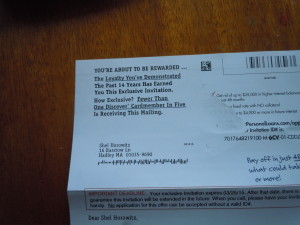Elizabeth Warren (@SenWarren, @ElizabethForMA) speaks to me far more deeply than anyone named Clinton. On domestic policy, she’s a wonder (foreign policy, not so much), and I’m proud that she’s my Senator. However, I think if she or Vermont Senator Bernie Sanders (@SenSanders) ran for President, they would be leaving a platform where they can be the conscience of the country, highly visible and highly effective, into a position of acutely marginalized and quickly forgotten.
I’ve certainly been involved with plenty of quixotic progressive presidential campaigns, most recently former Ohio Rep. Dennis Kucinich (@Dennis_Kucinich). The problem is–as our political system is currently structured, when these folks are shut out of debates, underfunded, stretched waaaaay too thin, etc., they make the case to the center-right that the Left can be safely ignored.
I’d much rather see Warren leading a challenge to a Hillary candidacy to push leftward from a position of strength, offering positions and cabinet names and being taken seriously. I’d also like to see Warren provide the same kind of gravitas and deep analysis to her own foreign policy that she so cogently brings to domestic economic issues; there’s room for quite a bit of improvement there.
Also, for Warren but not Sanders, there’s the issue of inexperience. She was elected in 2012, which means when the campaign starts to heat up in 2015, she’ll have only had two years and change of experience as an elected official. That’s significantly less than Obama had–he was a state senator before moving up to the federal level–and I think that was one of the things that really got in the way of his effectiveness.
Had Obama been more experienced, he might have taken the huge organizing momentum of his 2008 campaign and actively translated it into a people’s movement for real change. I think, in the aftermath of that election, if GOP lawmakers had been hearing from thousands of their constituents daily about a set of chosen issues (maybe two or three at a time), they’d have crumbled, and Obama would have been seen as one of the most effective Presidents ever. But Obama and the Democrats threw that rare chance overboard without a struggle. Remember “public option is off the table,” and single-payer never being on the table in the first place? Just one of many squandered opportunities to do what he was elected to do: make change.
Had Obama been more experienced, he would have understood–as LBJ did–when and how to push hard for real reforms. He would have marshaled resources for a massive shift in the way we do energy, closed the festering sore of Guantanamo, exited rapidly from Iraq and Afghanistan, etc.
And had he been more experienced, he might have taken more risks with his Cabinet, and not put so much faith in the Clinton- and Bush-era politicos who were suddenly making policy again.
Neither Warren nor Sanders has an effective national base. While they are a very visible part of our nation’s conscience, I don’t think they’d remain so in a presidential campaign. Let’s keep them where they are so they can build that base. And maybe, by 2020, mobilize it.








